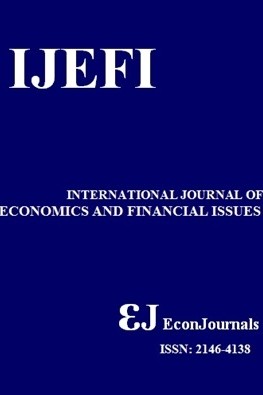The Responsiveness of Hong Kong Private Residential Housing Prices
The Responsiveness of Hong Kong Private Residential Housing Prices
- Başlangıç: 2011
- Yayıncı: İlhan ÖZTÜRK
Natalia A. Zaitseva, Irina V. Goncharova, Marina E. Androsenko
Private Equity and its Role in the Development of the Indian Manufacturing Sector
Mohammad Ahmar Uddin, Syed Ahsan Jamil, Khaliquzzaman Khan
Strategic Alliances: Industry-Specific Characteristics of the Achievement of a Competitive Advantage
Bankruptcy Profile of Foreign vs. Domestic Islamic Banks of Malaysia: A Post Crisis Period Analysis
Single or Menu Contracting: An application of the Hersanyi Model to Mudaraba Financing
Adil El FAKİR, Mohamed TKİOUAT
Esther Wanjugu Gitundu, Sifunjo E. Kisaka, Symon Kibet Kiprop, Lawrence Kangogo Kibet
The Effect of Audit Quality on Stock Crash Risk in Tehran Stock Exchange
Shokrollah Khajavi, Akbar Zare
Mediation Effects of Firm Leverage in Malaysia: Partial Least Squares - Structural Equation Modeling
